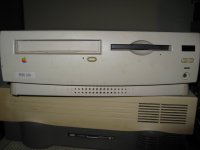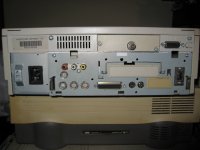All or almost all of that was addressed in the response article, the second one I linked.
I'll have to look at the cache stuff.
In terms of 75MHz machine speed: I need to get a network card working in my 6200, but when I put 7.6.1 on it at a friend's house and we put IE5 and macbench on it, it was "Fine" - in MacBench 4 it turns in almost the same scores as a 6100/60. Given that that that's intended to be representative of ~1997's Mac productivity applications, that's "Fine" in 1995.
And really, in 1995, the 6200 launched at a bit over half what a 6100 cost, in a complete bundle, and it was as fast as the 6100 was. For a home computer, that's pretty reasonable.
(Yes, that's for PPC apps, but much of what came with the 6200's bundles was PPC or FAT, and PPC/FAT software was becoming increasingly common, it seems like this issue was only specifically problematic with a couple games from the time. Incredible Machine series has been mentioned a couple times.)
Almost more importantly, to the point about the origin of the legend of the 6200, which is Scott Barber and Dan Knight, from the perspective of "it's 1997-2000 and I'm in a Computer Renaissance" - the 6200 should be at an advantage compared to 1995 when it was new, because by then, you'd be able to put 8+, speeddoubler 8, and a fair amount of free/cheap native software (including internet tools) from magazine coverdiscs on it, and it would be "fine" for the duties expected of a cheap used machine at the time.
To the cache issue specifically, where does it specify what bus speed the cache runs at? In the dev note, the block diagram shows it being essentially directly connected very closely to the CPU, but doesn't appear to list a speed.
In addition, from page 14 of the dev note:
The 603 bus is connected directly to the main processor and runs at the same clock rate. An external 256 KB second-level cache and 4 MB of ROM attach directly to the 603 data bus and help to optomize system performance.
So, I think that Daniel Taylor is probably correct in saying the 256k cache runs at the full speed of the CPU. Apple certainly thought so, and wrote as much as their dev note.
here is the relevant part of the diagram:

Presuming here that the dark black line labeled P_D63-0 is the 603 bus, the one that runs at 75MHz in the 5200/6200.
Then there's the fact that all of the comparisons were based on the improved 6300 when the original and primary gripe was with the 62xx
LEM, and subsequently, others, categorize the faster 100MHz+ systems based on this architeture in the same way and (incorrectly) list all of the same limitations on those machines as the 6200. It's definitely
worth noting that Daniel Taylor's experiences from the '90s were on a 6300, but it doesn't invalidate anything he wrote.
the Primetime II (III in the 6300) provides the '030 bus for both the LC PDS and CS slot, which can hamper performance if both cards are populated and used simultaneously.
Curious: In what scenarios does this come up? What combination can create a performance impact?
And, is that combination likely to have been used in any high amount in 1995?
And, given that you can have five complete 6200 systems including productivity software, displays, keyboards/mice and usually printers and/or modems for the cost of a single bare 9500, do you think it actually matters, at all?
Apple's own dev note (granted, this isn't like, "marketing material" or anything a store clerk would have been able to clarify in 1995, but they wouldn't have been sure about this re compatibility between, say, an LCII and a 630 either,
*and* the implication in the text is that the PrimeTime in the original 630 did the same thing, meaning this specific limitation/situation isn't even new to the 6200, it's the second generation to have this consideration, since the LCPDS is technically an 020/030 PDS slot and the 640 is of course an '040 system) suggests that there are compatibility issues, but doesn't say anything about performance.
Anyway, extremely curious as to which card combinations display performance issues, especially compared to any other LC-class 030 system equipped with either an internal modem or Ethernet. (Actually, a 575 comparison could be interesting, but I wouldn't be surprised if it also has PrimeTime or something like it.)



